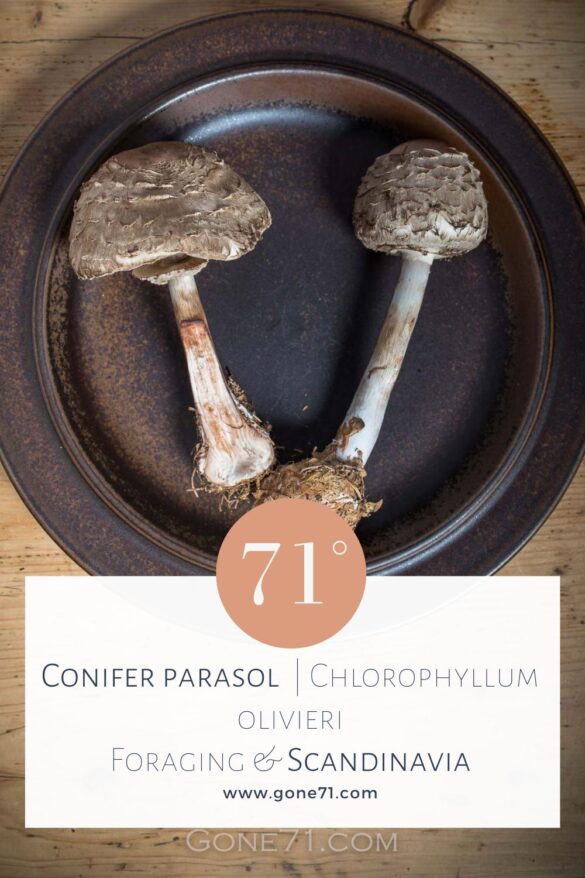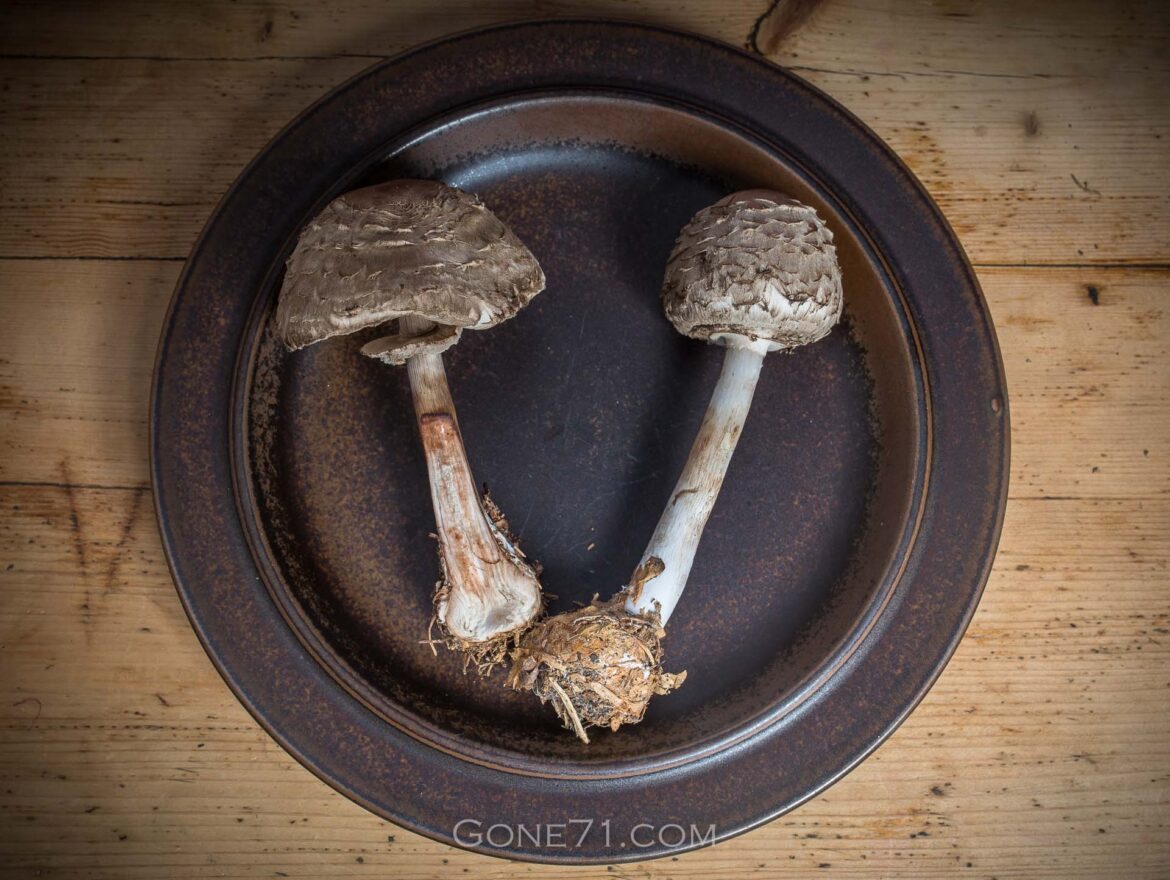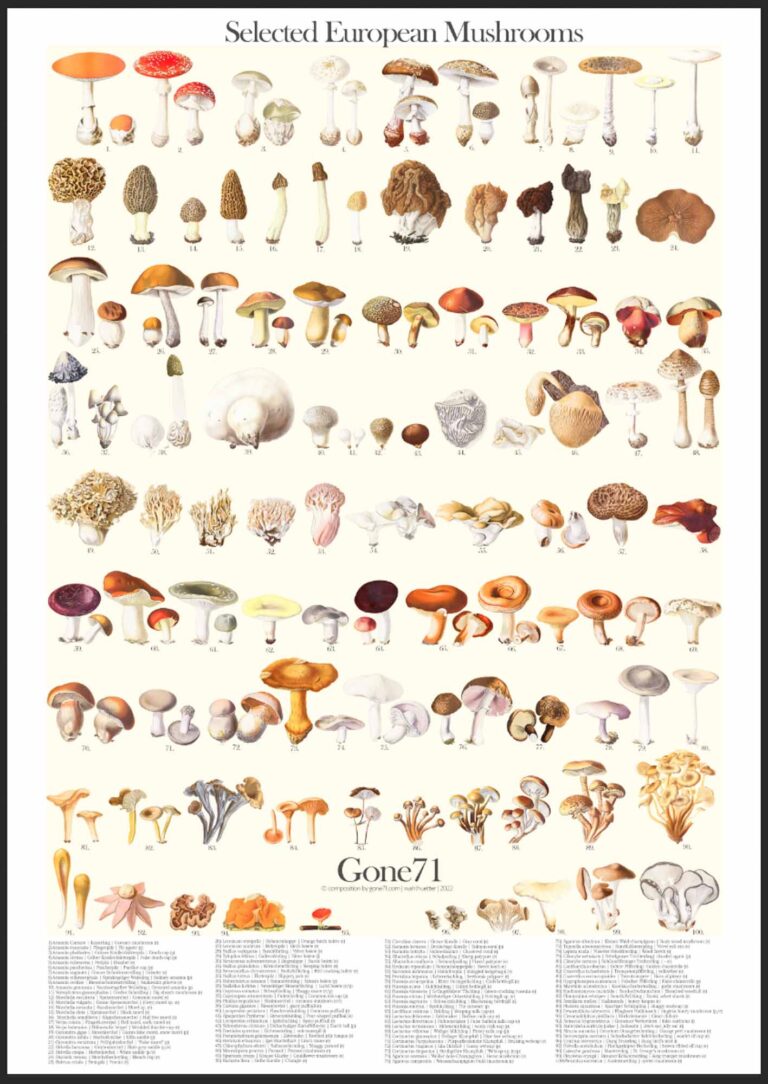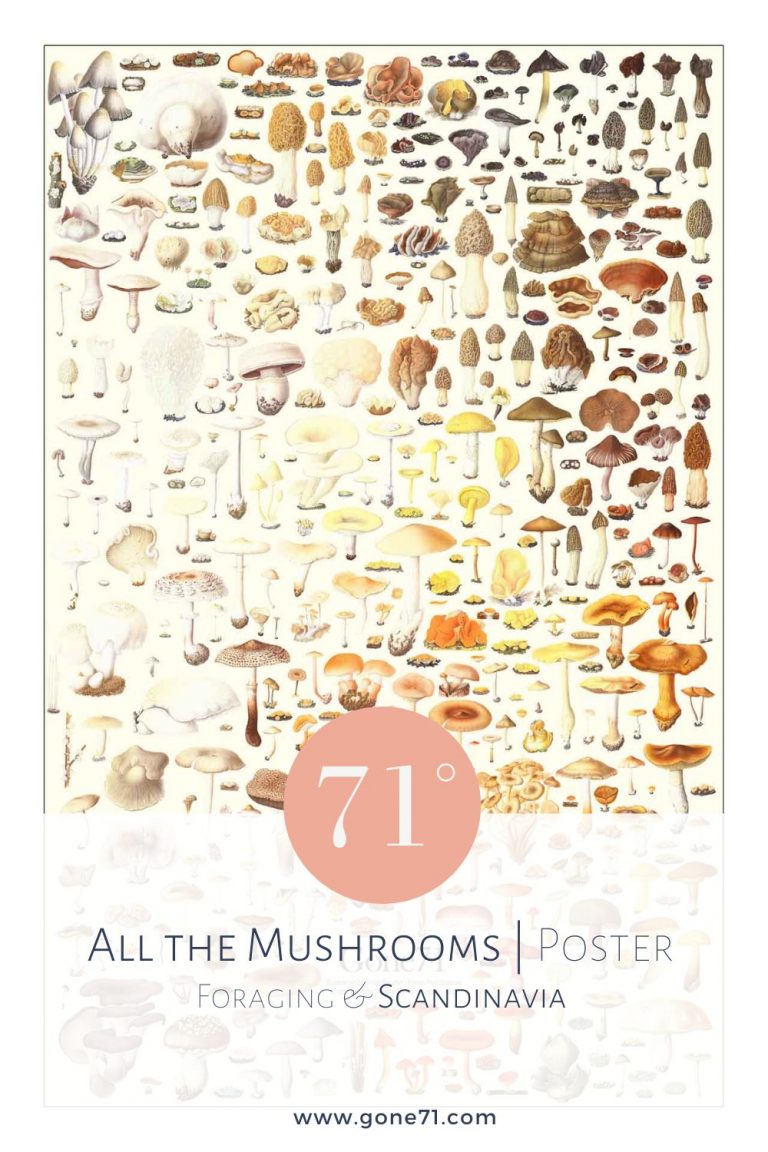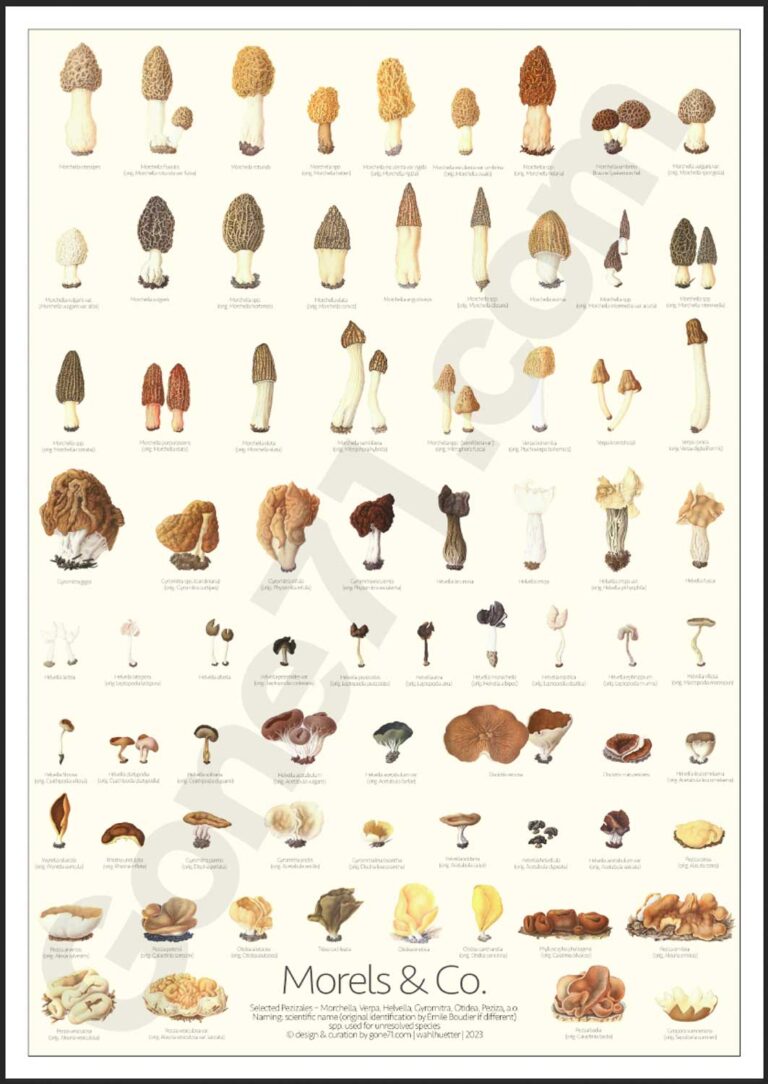nor.: Maurtueparasollsopp | swe.: Stackfjällskivling | fin.: Akansieni | dt.: Safranschirmling | sci. syn.: Macrolepiota olivieri
The conifer parasol is one of at least three species that are often referred to as “shaggy parasols”: C. olivieri, C. rhacodes (shaggy parasol) and the slightly poisonous C. brunneum (brown parasol). There is also the possibility of confusion with other poisonous species. Therefore, caution is always advised with parasol mushrooms that turn slightly reddish when injured. Many people confuse even the actual parasol mushroom and shaggy parasols, without even knowing that there are also poisonous variations.
Although somewhat smaller than its famous relative, the conifer parasol is still a large and very robust mushroom. If you can identify them well, you will find an excellent edible mushroom here. Look out for the clear distinguishing features.
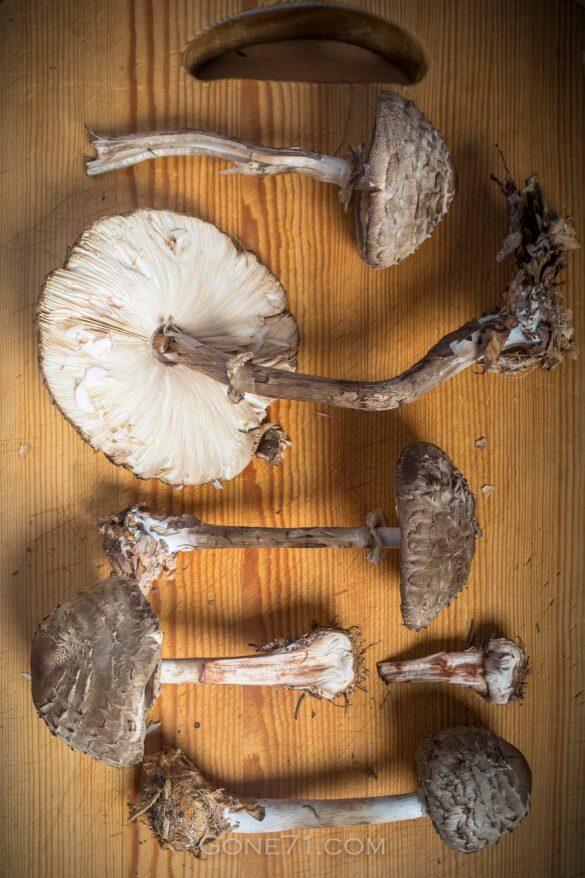
Appearance & habitat of Conifer parasols (Chlorophyllum olivieri)
cap diameter: up to 15cm
height: up to 25cm
months: June – November (Central Europe)
colours: light- or olive brown cap, white or light brown stem, flesh turns red uppon injury
habitat: mixed forests, coniferous forest
odour: pleasantly mushroom-like
consumption: cooked
The shaggy parasol is a large mushroom with a distinctive shaggy cap and tall stipe. The cap can range in size from 5-15 cm in diameter and is initially oval or egg-shaped, becoming broadly convex and flat in maturity. The cap is typically covered with shaggy brown scales, giving it a rough and scaly appearance. The gills are white and free from the stalk.
The stalk is white to light brown, often covered in white mycelium, with a strong, usually bordered bulb at the base. It can reach up to 25 cm in height and is typically white without scales respective scale pattern. The ring is movable and appears double.
The flesh is soft, white, turning instantly reddish and then wine-brown when bruised.
C. olivieri is usually found in mixed forests, often on needle litter.
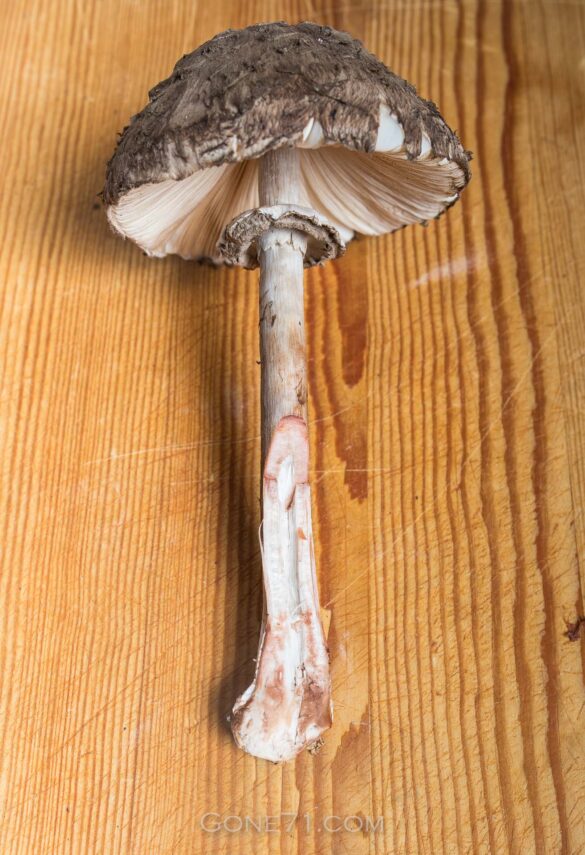
Look-Alikes of Conifer parasols (Chlorophyllum olivieri)
There are (posionous) species that can be confused with C. olivieri. Usually conifer parasols are mistaken for other species of “shaggy parasols” especially the actual shaggy parasol (Chlorophyllum rachodes) that is also edible.
False parasol
An other species that is more problematic is C. molybdites (especially in N. America but also occasionaly in Europe), which is also known as the “false parasol” or “green-spored Lepioter.” C. molybdites is a toxic mushroom that is often mistaken for C. olivieri because it also has a large, umbrella-shaped cap that is very similar in appearance. However, there are several key differences between the two species that can help to distinguish them. For example, the cap of C. molybdites is usually more greenish than brownish.
Parasol mushroom
Another species that can be confused with C. olivieri is of course the highly sought after Macrolepiota procera, which is commonly known as parasol mushroom. M. procera is a highly valued edible mushroom that is similar in appearance to C. olivieri, with a large, brownish cap with darker scales. In contrast this mushroom features aalso a scaly pattern on the stem that is not present in C. olivieri.
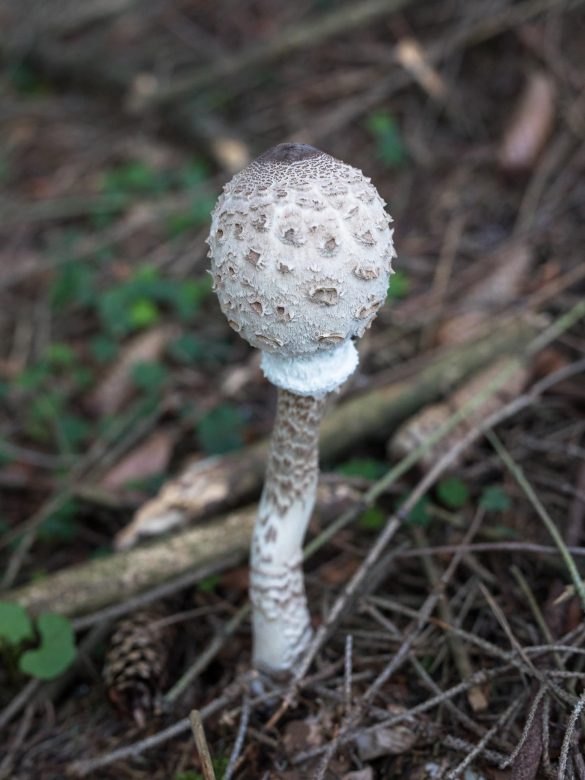
The cap contrast as distinguishing feature
The distinction to other secies can often be very tricky so be very cautious if you want to forage this mushroom. Compared to most poisonous species, the conifer parasol has only little colour contrast on the cap surface. I.e. it appears dirtier; brown background to brown scales and not light background to dark brown scales like in C. venenatum, C. molybdites (false parasol) or C. brunneum (brown parasol).
Caution: Mushrooms Are Not Guesswork!
Only harvest mushrooms that you can identify with 100% certainty! The consequences can be life threatening if you are wrong. If you have the slightest doubt: do not eat the mushroom! This is not a mushroom guide! For correct identification consult a mushroom expert.
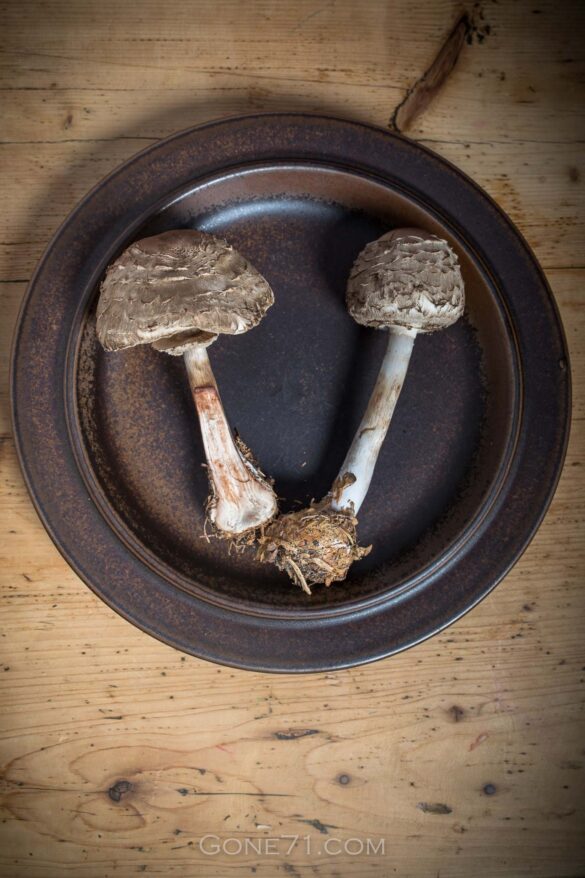
Conifer parasols (Chlorophyllum olivieri) in the kitchen
Conifer parasols can be used in the same way as their bigger relatves. We usually grill them or eat them breaded but there are a lot of possibillities how to prepare Conifer parasols. Here are some ideas:
- Sauteed: One of the simplest and most popular ways to cook parasol mushrooms is to saute them in butter or olive oil. This brings out their earthy, nutty flavor and makes them a great addition to pasta dishes, risottos, omelets, and more.
- Grilled: Grilled parasol mushrooms have a wonderful smoky flavor and a firm, meaty texture that makes them a great vegetarian substitute for burgers or steaks. Brush them with oil and grill them over high heat until they are charred and tender.
- Breaded: Breaded parasols are a popular dish in many European countries, particularly in Germany and Austria. The crispy, breaded exterior pairs well with the meaty and flavorful interior of the mushroom. For vegetarians it is a welcome substitute for “Schnitzel”.
- Stir-Fried: Parasol mushrooms can also be stir-fried with other vegetables like bell peppers, onions, and snow peas. They add a wonderful depth of flavor and texture to stir-fries.
- Stuffed: Younger caps can be stuffed with a variety of fillings, including cheese, breadcrumbs, herbs, and garlic. They can be baked in the oven or grilled until the filling is hot and the mushroom is tender.
- Soup: Parasol mushrooms are a delicious addition to soups and stews. They add a deep, rich flavor and a meaty texture that pairs well with beef, chicken, or vegetable broth.
- Pickled: Pickled parasol mushrooms can be eaten as appetizer. They are cooked and than marinated in vinegar, olive oil, herbs, and spices, and served with bread or crackers.
When using parasol mushrooms in cooking, it is important to clean them thoroughly before use. To do this, gently brush off any dirt or debris with a soft brush or towel. Do not wash them in water, as they will absorb the water and become soggy.
We have compiled this overview with the best of knowledge and belief, but do not claim to be complete and reserve the right to make errors.
Learn more about poisonous mushrooms and mushroom poisons here
↓↓↓
Find some inspiration in our illustrations
↓↓↓
Find some inspiration in other mushroom recipes
↓↓↓
